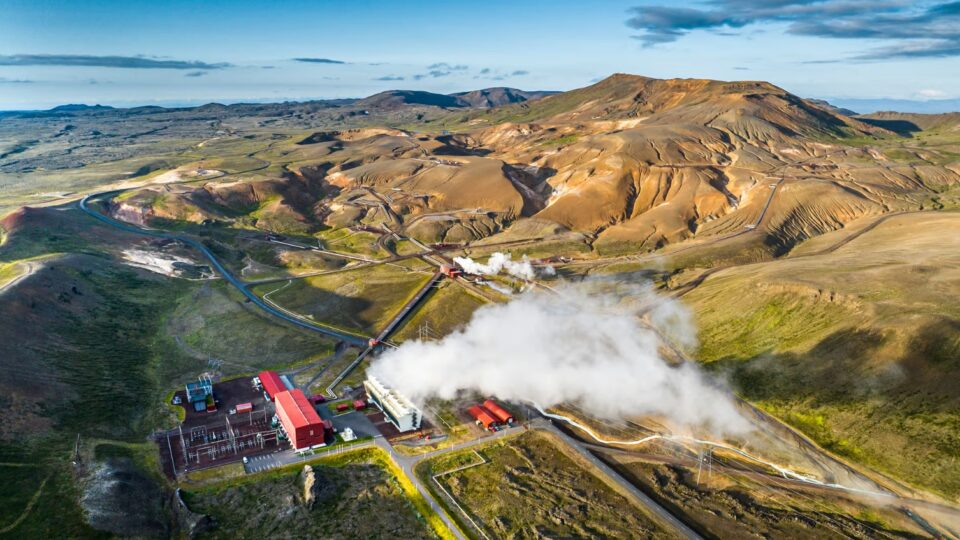Krafla is one of the most explosive volcanoes in Iceland, which is home to many active volcanoes, including one recently in the news near Reykjavik that hadn’t erupted for 800 years . Krafla is the site of the Krafla Magma Testbed, which may end up being for geoscientists what the Large Hadron Collider has been for particle physicists.
For over a decade, researchers have been drilling straight into the ground at Krafla to study what goes on deep beneath an active volcano. Ten years ago, they encountered an unexpected magma chamber a little over a mile down. Their equipment was destroyed but the researchers decided that they had uncovered a unique opportunity to study magma dynamics and potentially be able to tap into a significant new energy source.
The plan is to use the tremendous heat energy contained in magma to dramatically improve the production of geothermal energy. Krafla is already the site of a geothermal energy plant that makes use of the heat beneath the surface to boil water that then drives turbines to generate electricity.
Forthcoming drilling projects will make use of new equipment that can handle the harsh conditions that will be encountered in the magma chamber. The goal is to tap directly into the magma to produce superheated steam that could produce ten times more power than conventional geothermal systems. Conventional systems access temperatures around 200 to 300 degrees; the magma is at 1,800 degrees.
It will take a few years to complete the project, but if it is successful, it could have implications well beyond Iceland. There are many active volcanoes all over the world.
**********
Web Links
Drilling into magma: Risky plan takes geothermal to supercritical extremes
Photo courtesy of Landsvirkjun.
Earth Wise is a production of WAMC Northeast Public Radio
